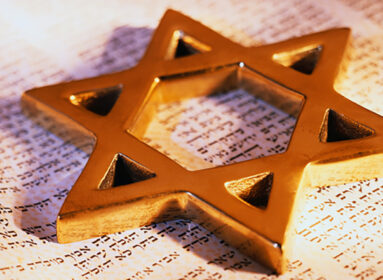
Hoshanna Rabbah, with its custom of circling the synagogue seven times with lulav and etrog in hand, can easily be made memorable for our children.
Wednesday, Oct. 19 (21 Tishrei) marks the Jewish holiday of Hoshanna Rabbah, the seventh and concluding day of the holiday of Sukkot. Hoshanna Rabba is unique in its latent potential for spiritual accomplishment and growth. It is also rich in its liturgy, ritual and symbolism. Yet, Hoshanna Rabbah remains obscure and overshadowed by the rest of the Jewish holiday cycle, unknown to some and under-appreciated by most. If Purim is sometimes referred to as a minor holiday, I’m not sure where that leaves Hoshanna Rabbah.
The modern-day visitor to Israel may be familiar with the town Motza, located just outside of Jerusalem on the Jerusalem-Tel Aviv highway. The Mishna (Sukka 4:4) relates how the Jews of Jerusalem would descend to Motza on Sukkot. The willow branches they would pick there would be brought back to the Temple in Jerusalem and erected on both sides of the altar. On each day of the holiday, they would circle the willow-laden altar once. On the seventh day, Hoshanna Rabbah, seven circuits were made.
This grand spectacle had an audio component as well. Besides the shofar blasts that accompanied the procession of bringing the willow branches up from Motza to Jerusalem, prayers were uttered while circling the altar as well. The simple yet powerful prayer, “please G-D, grant salvation please, please G-D grant success please,” was recited. A Hebrew variant of the prayer is “Hoshanna.” Hence, the day on which this prayer was recited while circling the altar seven times came to be known as “Hoshanna Rabbah,” or “The Great Hoshanna.”
Following the destruction of the Temple, a plethora of rich customs and traditions developed that made this day unique. In the absence of a house of centralized religious and national expression, the significance of Hoshanna Rabba shifted to the synagogue and study hall. This shift, with its parallels in other areas of Jewish ritual law, kept the holiday alive in the Jewish heart and mind throughout the long exile.
In the contemporary synagogue, the bimah (lectern from which the Torah is read), symbolic of the altar, is circled seven times. The same prayers that were uttered then are recited now. The import of the day is expressed by the rabbinic tradition that any decree that was sealed on Yom Kippur in the Heavenly Court is not dispatched until Hoshanna Rabbah. Sincere repentance on this day can still “tear up” this decree. As such, the prayer leader wears a white kittel, reminiscent of Yom Kippur. The holiness of the day is evidenced by the custom of the pious to remain awake the entire night immersed in Torah study.
Is this holiday still relevant in our day and age? The American Jewish experience has focused on embracing the holidays that can most easily be conveyed to our children. Children relate to Hanukah, with its strong visual and sensory experiences (not to mention presents) much easier than to Shavuot, for example. As such, Hoshanna Rabbah, with its custom of circling the synagogue seven times with lulav and etrog in hand, can easily be made memorable for our children. More important, though, Hoshanna Rabbah is a day that sensitizes the mature mind to higher levels of spirituality. On this day, we pray for salvation as well as financial and material success. The downtrodden state of the Jewish people, in addition to the perceived diminished state of the Almighty’s glory, is lamented. We cry out to the Almighty that this absurd situation is unacceptable and that he should redeem us from our exile. Indeed, Hoshanna Rabbah, like many Jewish holidays, is infused with strong messianic messages.
The liturgy is powerful and it behooves us to become identified with it. Read the English translation; familiarize yourself with its message. Individuals or families looking to expand their Jewish experience may want to drop in on Hoshanna Rabba services at a local synagogue. Just don’t forget to bring your children along.
Rabbi Perry Robinson is associate rabbi of Congregation Agudas Achim of Bridgeport and a member of Yeshiva Gedola of Bridgeport Kollel.
KOLOT is a feature of the Jewish Ledger in which readers are invited to submit original work on a topic of their choosing. Inquiries and/or submissions should be sent to editorial@jewishledger.com.







 Southern New England Jewish Ledger
Southern New England Jewish Ledger














